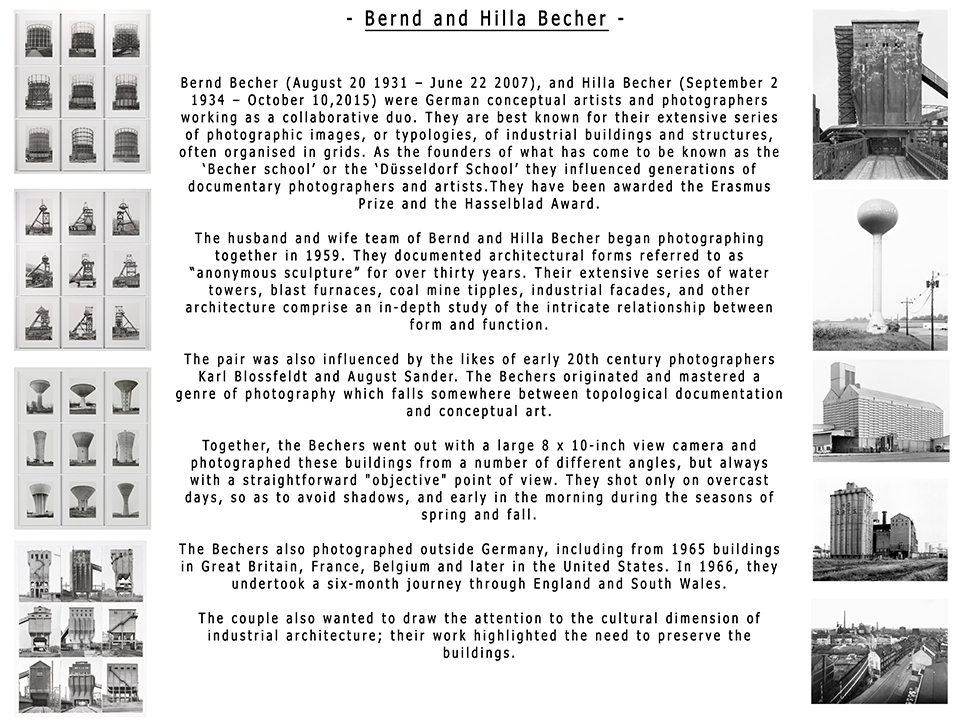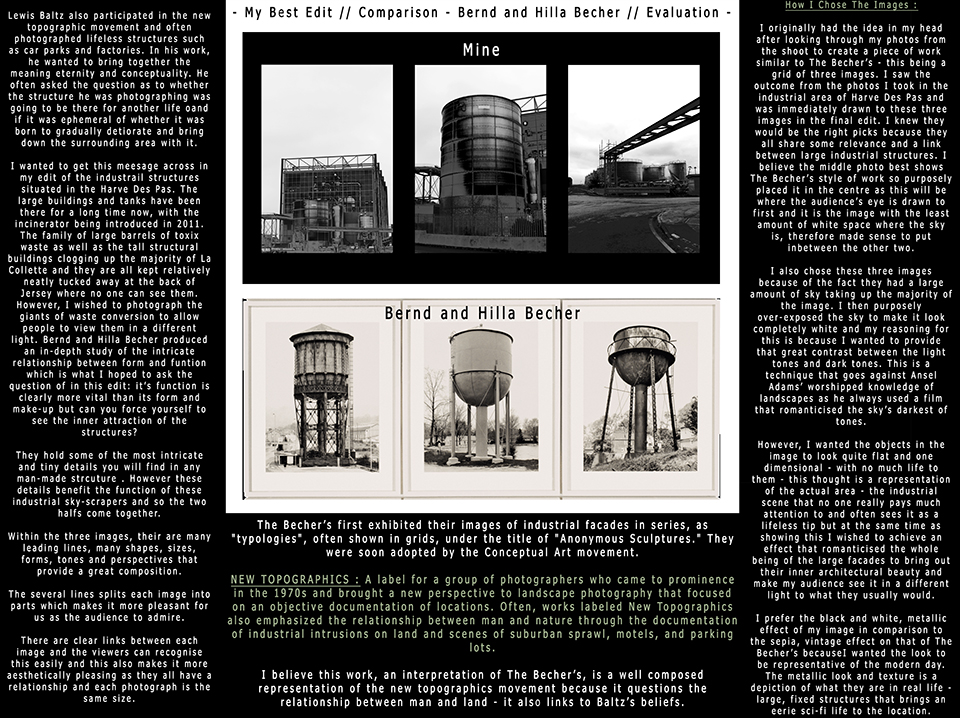Here is my response to the Typology Study. I walked around the village in St Aubins taking photos of different doors that I walked past. Once I collected a range of different doors, I cropped each image so that they were all about the same size. I then placed all the images in a collage to show. I am happy with my result, and I now understand more about what Typology is about.
Category Archives: Research
Filters
Climate Change: photography gallery trip
We had a trip to the Jersey Art Centre where we saw an exhibition called ‘Alliance Française: Climate State of Emergency’. This showed photos relating to the change in the planet and the effect people are having on the environment.
Here is a selection of my favorite images from the gallery. In my opinion I think the middle top image is the best as it really shows a vast empty but also full environment. I also like colours and textures in the picture. With the slightly dark blue clouds in the dramatic sky contrasting with the bright orange desert, rough, dusty ground. The image is very full with things to look at but cleverly gives off this empty feeling; a feeling of isolation. I also like that the photographer has taken a picture of something that used to be alive but has died over time. I find that it really sticks out over all the other images showing something that others haven’t.
Abstract and Formalism
Abstract photography is an image that isn’t associated with the object world. This can be done through various unusual textures within the photograph along with striking light forms creating interesting shapes. This creates a strange and slightly unrealistic effect. Influential photographers include Paul Cézanne, Jessica Eaton, Barbara Rosenthal.
Rust Abstraction



Keld Helmer-Petersen


Boylle Family



Formalism in photography analyses and compares form and style mainly focusing on color, line, shape, texture and their purely visual aspects.
Paul Strand – Light/Shadows

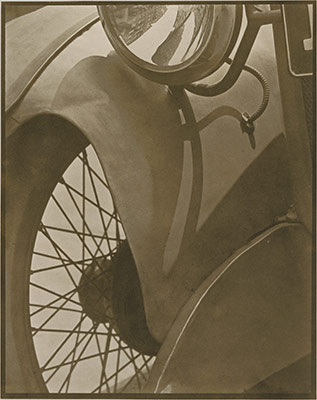

Reeds – Line/pattern



Texture/pattern

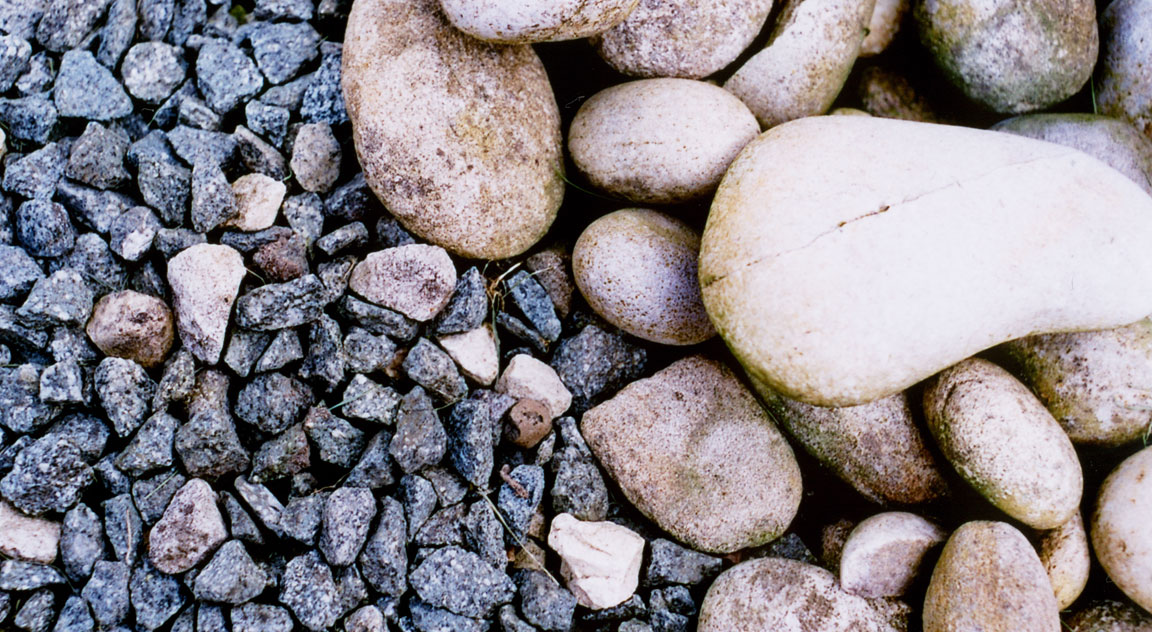

Romanticism
Romanticism heavily focuses on emotion and more of classical sides of beauty rather than “ugly” and “industrial” areas. It originated in response to the industrial revolution in England where people where fleeing the beautiful countryside and emigrated to the cities which spoiled the landscape. Romanticism can often be exaggerated by the artist whose interpretation and feelings towards beauty are expressed. Nowadays romanticism is focuses more on beauty of the landscape.


A Certain Walk – Jersey Art Centre Exhibition
On Thursday the 12th January I visited the Jersey Arts Centre. The Arts centre focuses on promoting and encourage the development of art. Their website says they aim to:
- “To enrich the quality of life for all residents and visitors
- To encourage participation in the performing, visual and literary arts
- To educate, inspire and to encourage debate”
The exhibition, known as: “Climate State of Emergency” in association with Alliance Francaise builds upon the theme of how climate change impacts different people in different parts of the world. The exhibition was responding to the 2015 United Nations Climate Change Conference in Paris.
The exhibition portrays the serious dangers of climate change exposing the level of truth despite endless politicians burying and therefore prolonging the issues that have already arisen. This exhibition successfully points out to us of ho climate change has got so bad that it cannot be an issue that is simply swept under the rug for another 50 years. In this sense it is somewhat a form of protest for the lack of things being done with the issue and how it harms everyone on an international level.


My favorite photographs:

What I like about these photographs:
- Tells impact of man’s actions
- Sad/distressing
- Lack of life – nervous
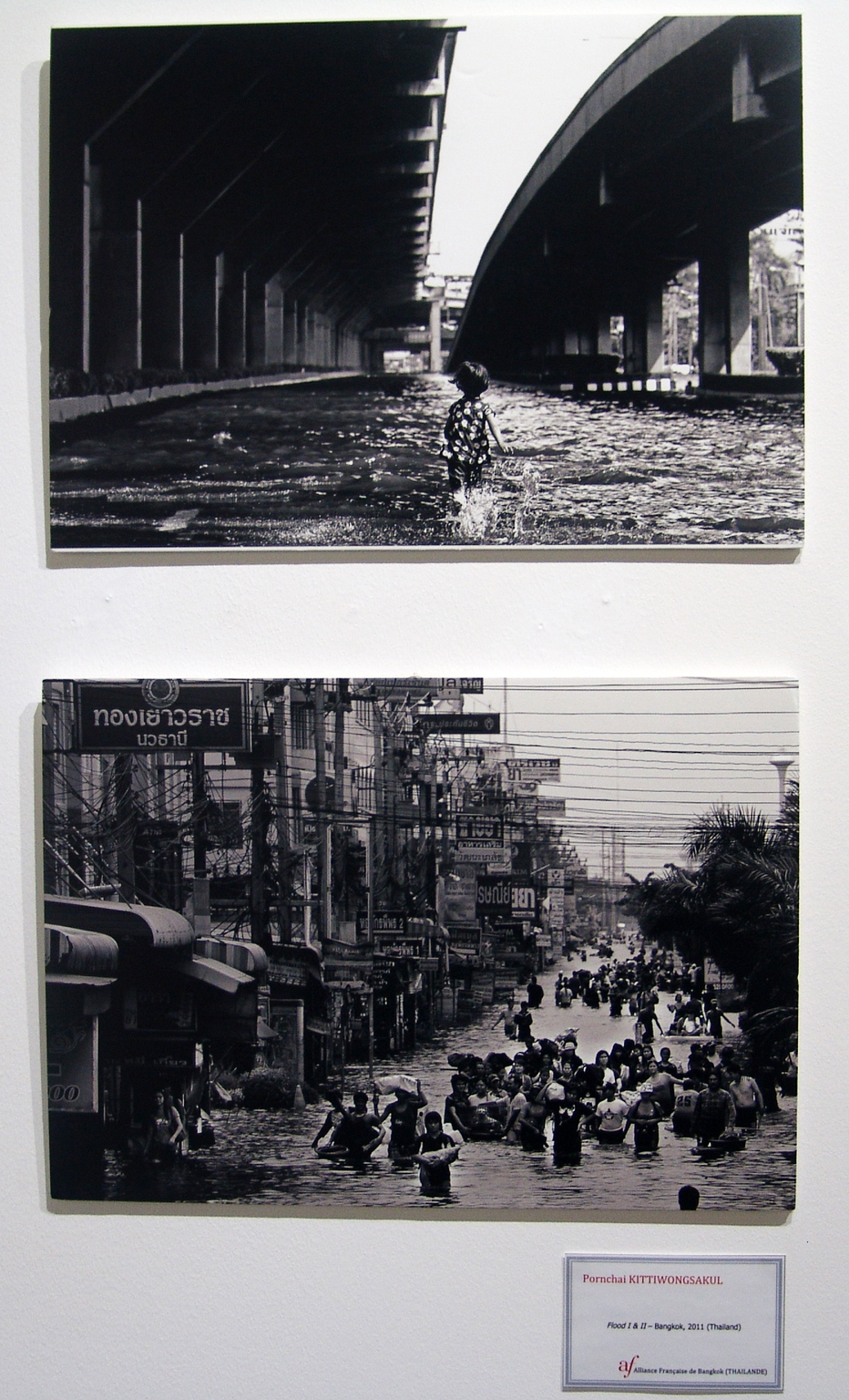
What I like about these photographs:
- Serious/crisis level, impacts us all
- Strong contrast
- An issue we cannot ignore
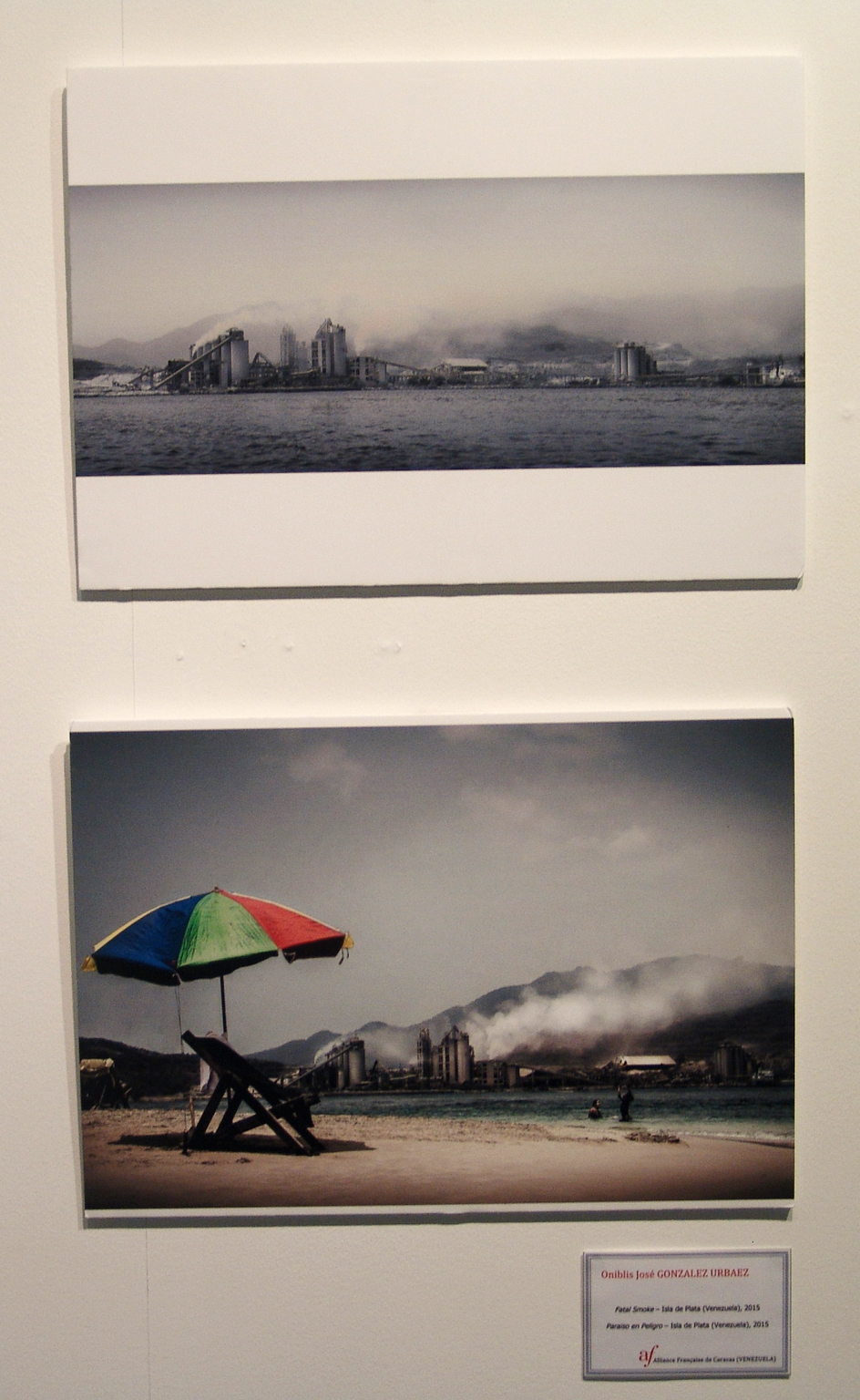
What I like about these photographs:
- World is suffering
- Little amount of colour stands out
- Tells a story
- Feeling of abandonment from a once happy place
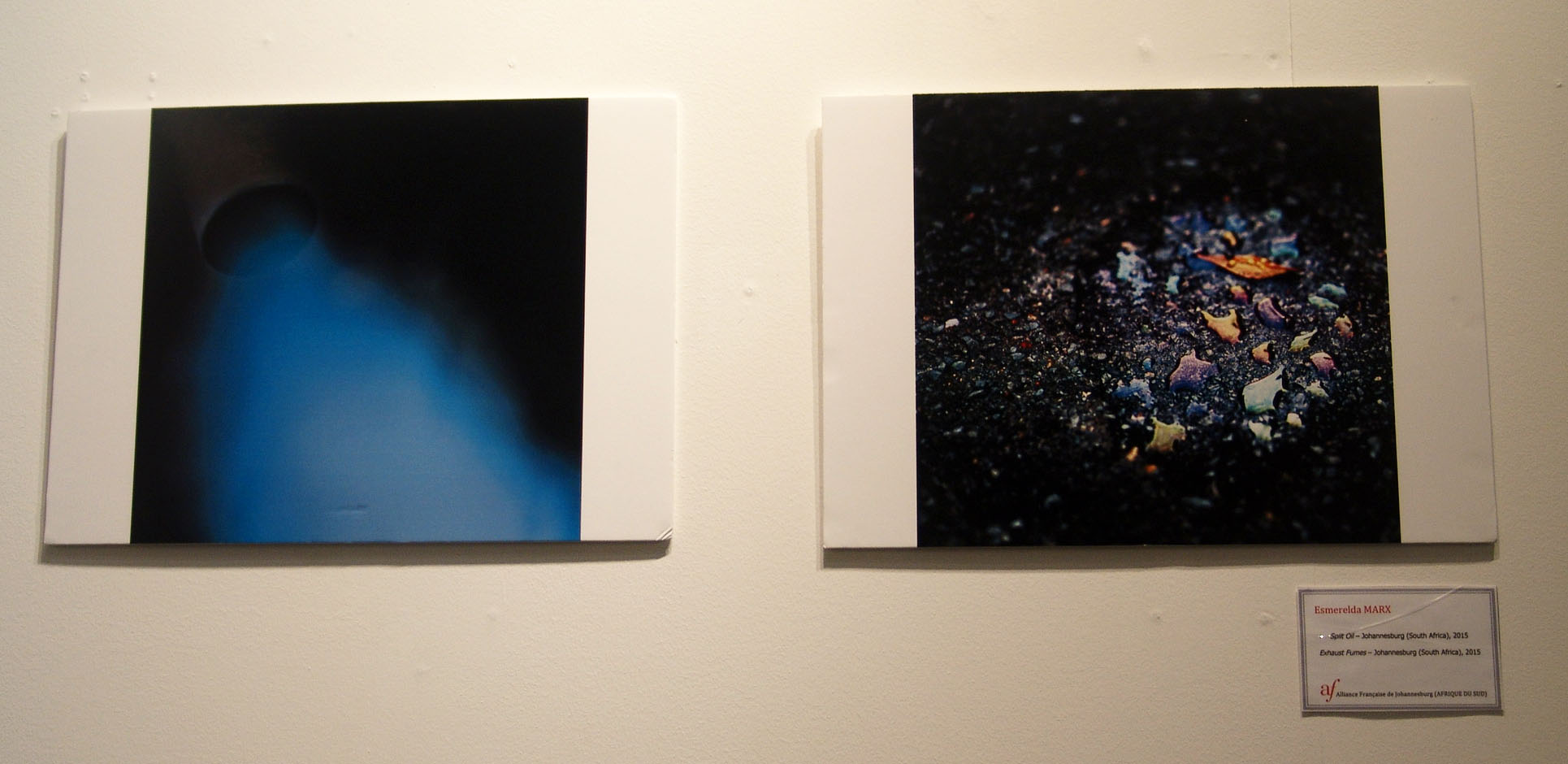
What I like about this photograph:
- Appears toxic
- Dark levels, appears dangerous to go near
- Quite dirty
- Colour projected
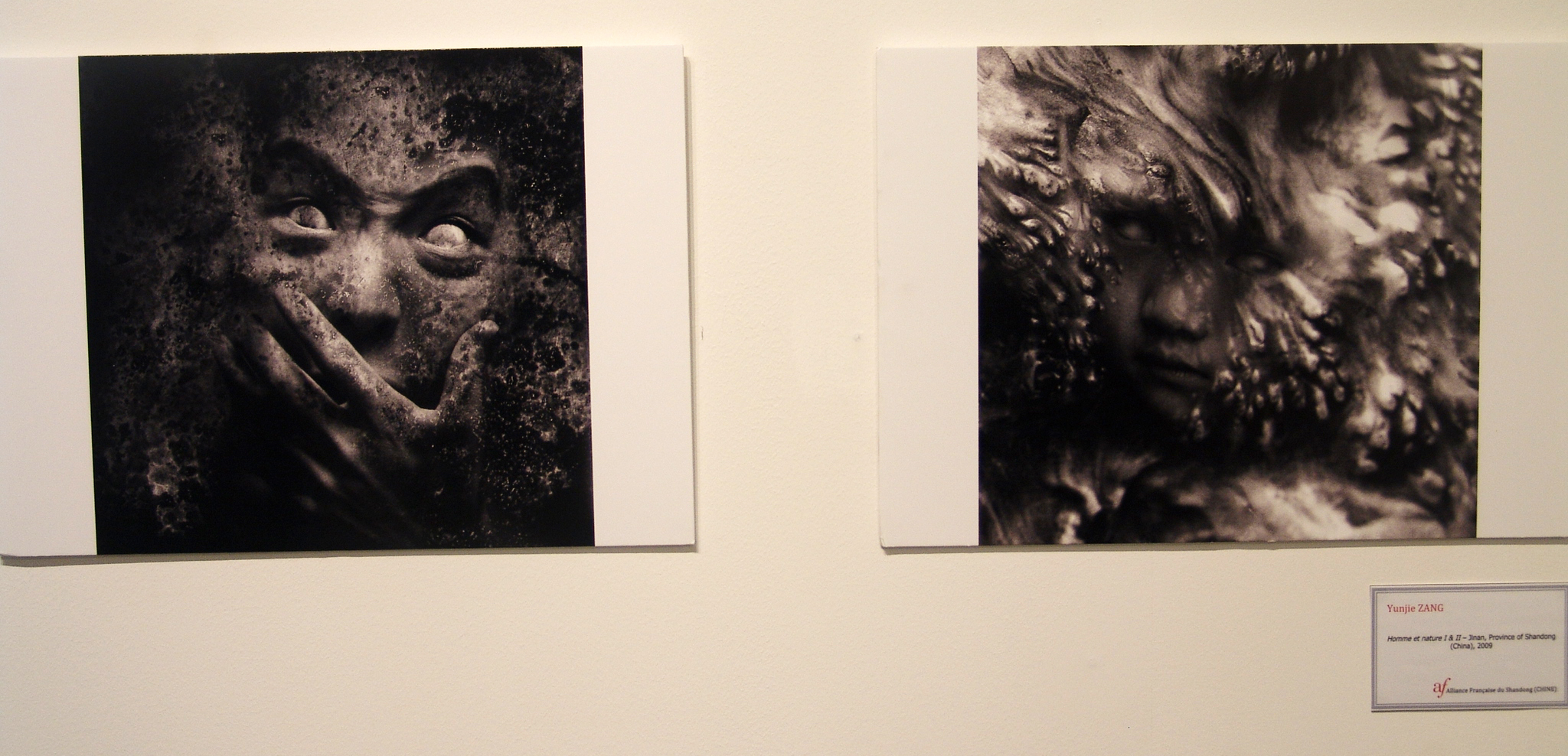
What I like about these photographs:
- Lots texture
- Taken on Macro to pick out detail
- Appears quite painful
The Topographics
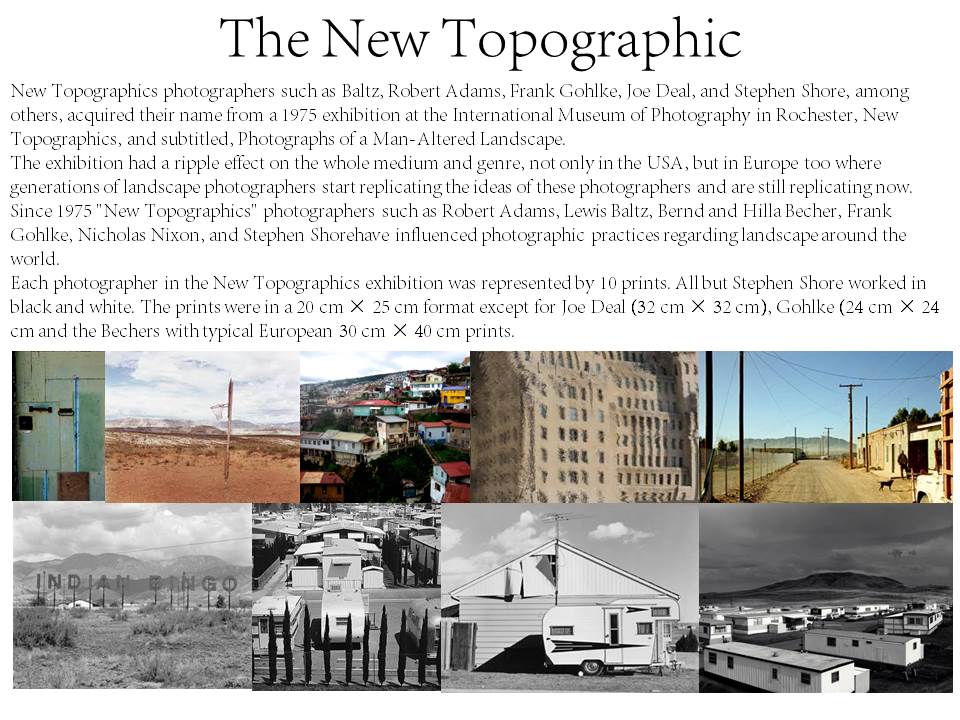

The New Topographers
The new Topographers was a landscape exhibition in America in 1975 and 1976 headed by William Jenkins. Groups of photographers comprising of: Robert Adams, Lewis Baltz, Joe Deal, Frank Gohlke, Nicholas Nixon, John Schott, Stephen Shore and Henry Wessel Jr later influenced this particular style to influence how its done today. They can be presented in black and white prints or in color, and often depict “ugly” urban locations and settings, and with this they find beauty within them. They do this by finding particularly harsh settings which connote feelings of hostility, and with this, these photographers can stand back and observe the surroundings which incorporate an essence of beauty. This is interesting because it shows how the strong use of contrast can be exaggerated to create tense emotions for the viewer.
Robert Adams

I like this photograph because of how the strong contrast between the dark tones of the surrounding landscape and the brighter white tones of the caravans. As this is a trailer park it suggests some sense of poverty and this is emphasized again by the dark tones of the surrounding mountains and the fact the landscape is in the top 2/3’s of the photograph, overpowers the caravans. However the caravans with the strong bright tones are interesting because they show a sense of happiness and positivity which stands out particularly. This emphasis on the striking white tones suggest that the people who live in these trailers, despite their hard lives still continue to live positively. Robert Adams has enhanced this feeling by the fact he has taken the photograph from a birds eye view. The fact we the viewers are looking down upon these caravans is suggestive of how poor and how hard this style of living can be.
Stephen Shore

This photograph fascinates me because mainly because of the vibrance of colors within the landscape. For example, the blue sky with no clouds appears almost quite innocent as it falls over the desert. On the other hand the desert appears quite a happy place in the sense of the warmth of the colors is projected of the landscape. From this, essentially the bright lighting imposes a happy mood. I also like how the main focus of the photograph is the road ahead with the man and his dog steered far to the right. This is significant because Man and dog are commonly associated with friendship, but the fact they seem slightly apart in the photograph shows that the current setting appears quite hostile. Furthermore, the man appears to be looking at the photograph appearing as if he doesn’t trust the photographer, and therefore making us fearful. To make us more somewhat more fearful, I believe the heavy depth of the photograph presents the road as if it is never ending.
Initial Research on Key Terms
The New Objectivity was a movement in German art that arose during the 1920s as a reaction against expressionism.
Expressionism was a modernist movement, initially in poetry and painting, originating in Germany at the beginning of the 20th century. Its typical trait is to present the world from a subjective perspective, distorting it radically for emotional effect in order to provoke moods or ideas.
The movement essentially ended in 1933 with the rise of the Nazis to power.



An archival image is an image meant to have lasting value. Archival images are usually kept off-line on a cheaper storage medium such as CD-ROM (compact disc) or magnetic tape (magnetic storage or magnetic recording is the storage of data on a magnetised medium, developed in Germany) in a secure environment. Archival images are of a higher resolution and quality than the digital image delivered to the user on-screen.
Archival imagery can be historical images of iconic landscapes or landscapes with some sentimental value and often have a big difference in comparison to its new look – for example, it could be built on new land or just given an updated look. You can find many examples of developed landscapes in Jersey.
Abstract photography, sometimes called non-objective, experimental, conceptual or concrete photography, is a means of depicting a visual image that does not have an immediate association with the object world and that has been created through the use of photographic equipment, processes or materials. An abstract photograph may isolate a fragment of a natural scene in order to remove its context from the viewer, it may be purposely staged to create an unreal appearance from objects, or it may involve the use of color, light, shadow, texture, shape and/or form to convey an impression. The image may be produced using traditional photographic equipment like a camera or it may be created without using a camera by directly manipulating film/paper.
Abstract photography has rocketed during the 21st Century with the development of computers and hardware and their ease of access to people. The boundaries of abstract photography were expanded beyond the limits of film and chemistry into limitless dimensions.
Jessica Eaton
%20and%20cfaal%20115,%202011%20(right).jpg)
Barbara Rosenthal

Eileen Quinlan
%20and%20Black%20Friday,%202011,%20Chromogenic%20color%20print%20(right).jpg)
In art, formalism is the study of art by analyzing and comparing form and style—the way objects are made and their purely visual aspects. In painting, formalism emphasizes compositional elements such as color, line, shape, texture, and other perceptual aspects rather than the historical and social context.
The philosopher Nick Zangwill of Glasgow University has defined formalism in art as referring to those properties “that are determined solely by sensory or physical properties”.
A formal analysis is an academic method in art history. It requires you to describe things very carefully.
Zangwill defined three types of formalism. He described anti-formalist thinkers as those who “think that no works of art have formal aesthetic properties.”


Romanticism
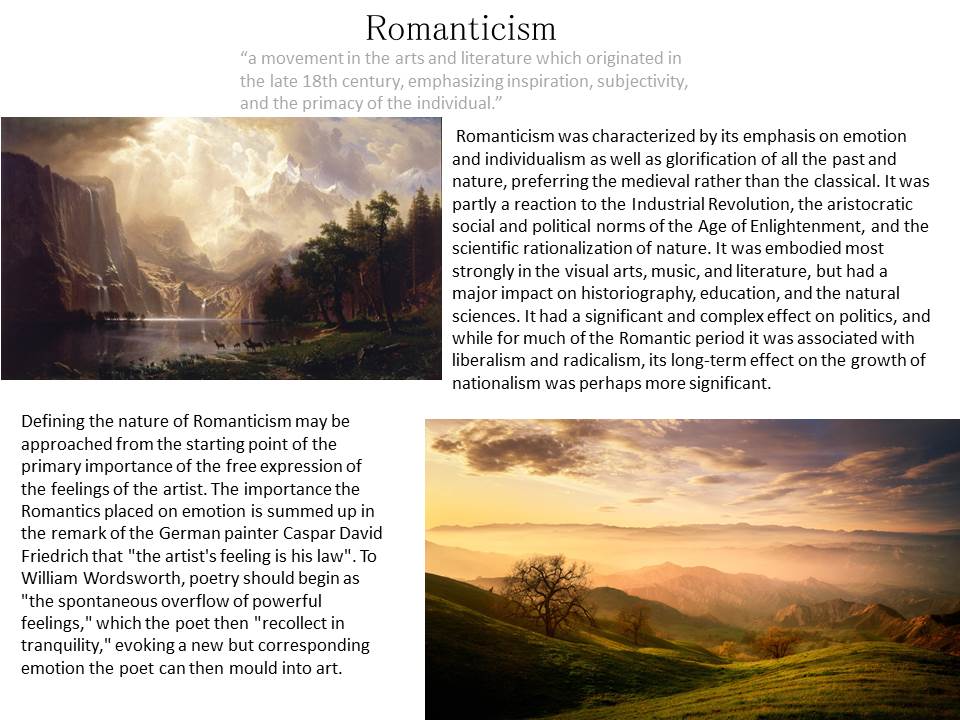
Harve Des Pas : Final Edit // Bernd & Hilla Becher
